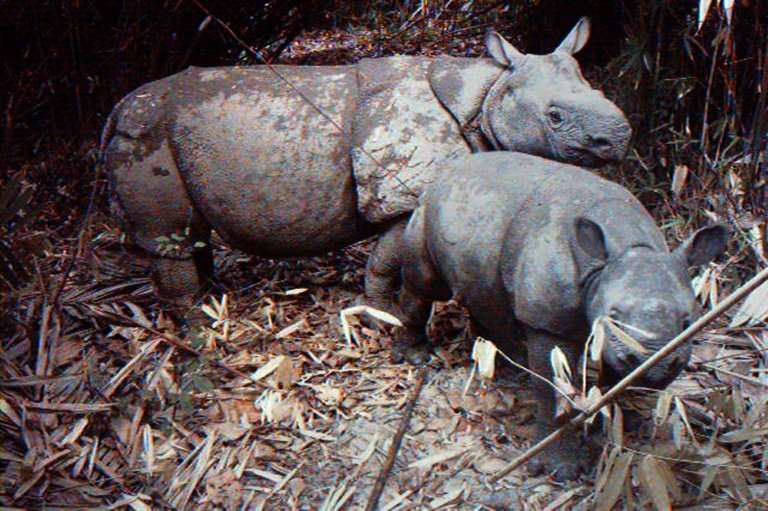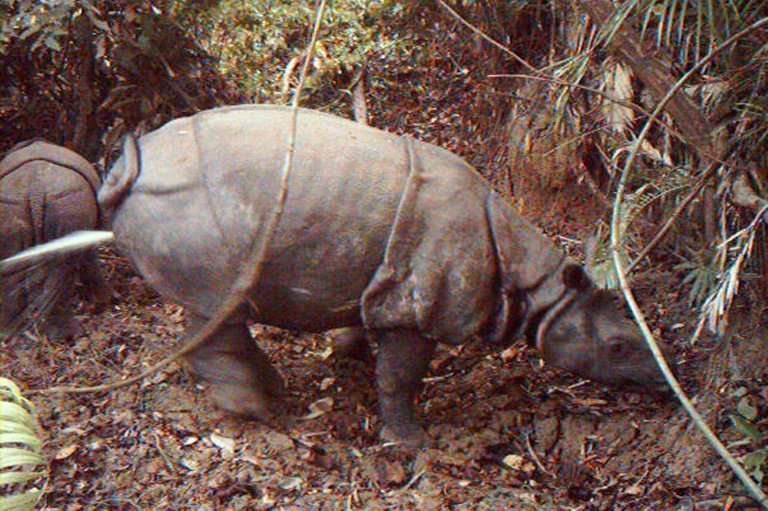Indonesia tsunami raises fears for endangered Javan rhino

Indonesia's tsunami has raised fears that another deadly wave could wipe out the few dozen Javan rhinos still living in the wild, conservation authorities said Friday.
There are believed to be fewer than 70 of the critically endangered species in a national park not far from a rumbling volcano that triggered Saturday's killer wave.
None of the animals are believed to have been killed in the disaster—which left more than 400 people dead—but officials are warning that another deadly wave could slam into the stricken region.
That is putting pressure on conservationists at Ujung Kulon National Park, on the western tip of Indonesia's main island of Java, to ramp up a longstanding plan to find a suitable secondary habitat for the rhinos.
"It's become our duty to work harder to find a second habitat because the danger is real," national park chief Mamat Rahmat told AFP.
"We're lucky that the tsunami did not affect the Javan rhinos this time. But the threat is there and we need to act accordingly."
Widodo Ramono, head of the Rhino Conservation Foundation of Indonesia, added: "If you've only got one habitat and there's another tsunami, the rhinos could be wiped out completely."
Plans to find a second home for the species have been in the works for about eight years, with conservationists surveying areas all over Java and neighbouring Sumatra but so far without success, he said.

The size of the habitat, climate, food and water sources and safety from poachers are among the key criteria, Rahmat said.
"There are still a lot of issues to be worked out," he added.
The rhinos' current sanctuary in the park comprises some 5,100 hectares (12,600 acres) of lush rainforest and freshwater streams.
Several years ago, three calves were filmed in the national park, raising hopes for the future of the world's rarest rhino after years of population decline.
The shy creature, whose folds of loose skin give it the appearance of wearing armour plating, once numbered in the thousands and roamed across Southeast Asia.
But, like other rhino species across the world, poaching and human encroachment on its habitat has led to a dramatic population decline.
Poaching in particular represents a severe threat, with rhino horns used in traditional Asian medicine fetching ever higher prices on the black market despite a lack of scientific evidence showing the horn has any medicinal value.
© 2018 AFP

















